Welcome to our list of the best small snakes to keep as pets. Everyone of these can be found for sale and captive-bred. Let’s take a closer look…
Last updated on February 1st, 2023 at 09:34 am
Small Snakes that don’t grow
We’ve all heard the tale of the unsuspecting customer who brings home a tiny reptile from a pet store, only to discover it eats like a hippo and ends up reaching a ridiculous size. Years ago, when online resources like this site were less widely available, mishaps like that happened quite often.
Someone would bring home a little snake that was as thick as a pencil, only to have it turn into a ten foot chunk of an animal within a couple years.
Obviously, if you’re a beginner keeper, or you’re just running out of space (like me), it’s important to take a look at some small species that are guaranteed not to grow too large. Every species on this list fits this description – they’re small, easy to house, and will never outgrow a 3ft long enclosure.

Why keep small snakes as pets?
Obviously their size is the number one reason to consider small snakes as pets. Notwithstanding, they have a lot of other things going for them. Hognose Snakes and Rosy Boas, for example, have extremely simple requirements. All they want is quality frozen-thawed rodents, some heat, and low humidity. Easy!
Small Snakes for beginners
While there are lots of small snake species found around the world, there’s only a handful that are widely available, easy to feed, and captive-bred.
Species such as Blind Snakes, Ringneck Snakes and Egg-eating Snakes, for example, often look really cute, but are in fact wild-caught when you buy them. This means they come pre-stressed and pre-loaded with parasites. The result is that they die not long after you buy them!
Yet other small snakes have specialised dietary requirements, meaning that even if they are healthy when you get them, they will starve themselves if you can’t get the exact food they want. Two examples that come to mind are Blind Snakes and Scarlet Kingsnakes.
Small snakes to avoid:
- Ringneck Snakes
- Egg-eating Snakes (unless guaranteed captive-bred)
- Blind Snakes
- Worm Snakes
- Scarlet Kingsnakes
- Dragon Snakes
So, what you need is a captive-bred, hardy species that will live a long, healthy life. With this in mind, we’ve compiled a list of the best small snakes to keep as pets.
Keep reading to find out more about them…
My top 8 small snakes to keep as pets
Now that we’ve discussed why it’s worth considering a small snake as a pet, let’s get into my top 8 small snakes. Everyone of these snakes is widely available and easy to keep. They can all be found as captive-bred babies, too. Remember this point when it comes to buying: captive-bred animals = healthy.
1. Garter Snakes (Thamnophis species)
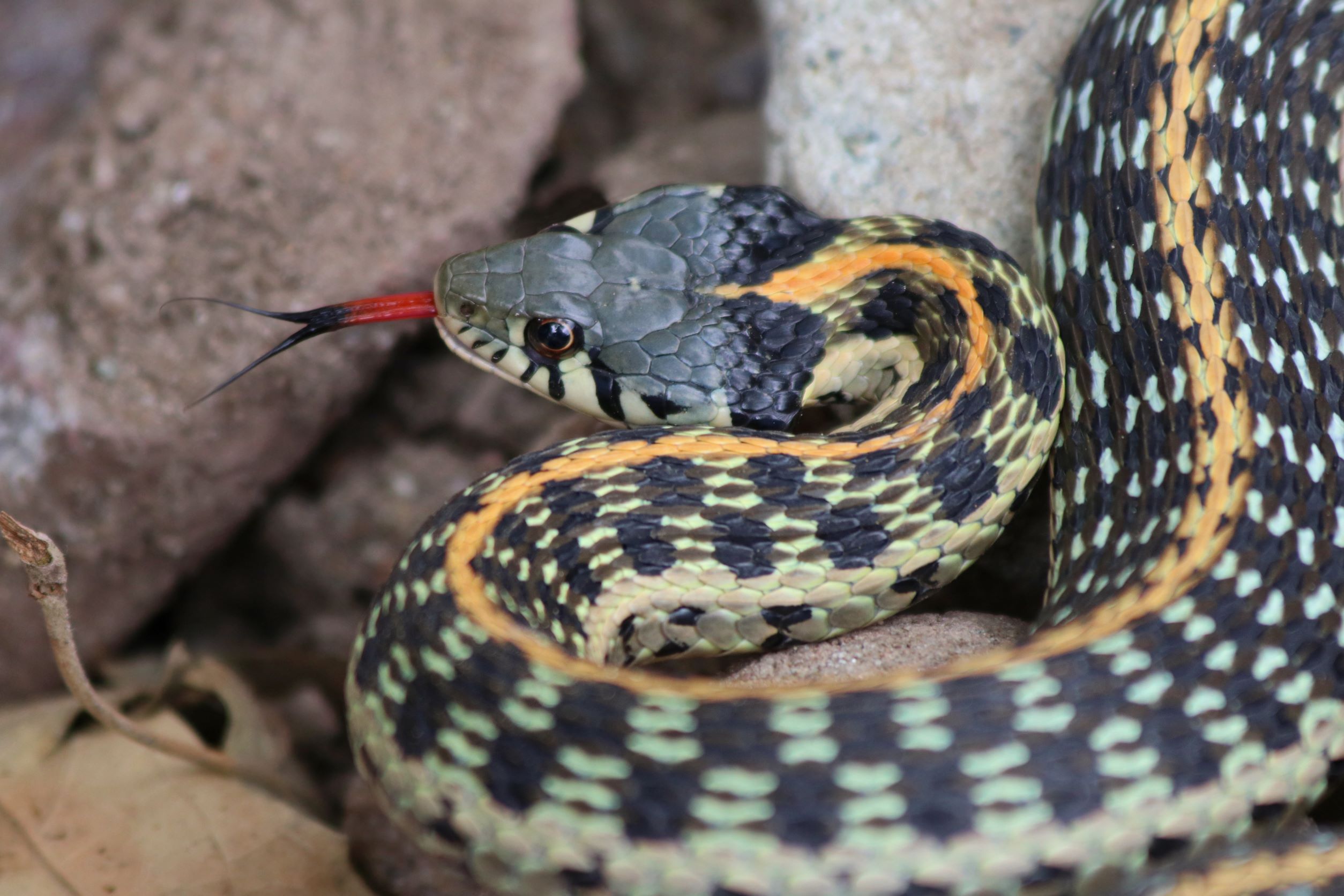
Garter Snakes are hardy little creatures that are a common feature throughout the riverain ecosystems of North America. In many states, like Indiana where I grew up, you can literally spot a dozen Garters in a day by walking along river banks.
Overall, they are extremely successful, so long as they can find some worms, frogs, toads or fish to eat. In fact, in their diet is probably the main thing they have going for them as captives.
A lot of people love reptiles, but don’t like the idea of feeding rodents. Captive Garter Snakes have no need for rodents at all, you can feed them earthworms and other invertebrates their whole lives.
It’s important to remember however, that although they like fish, they must not be fed goldfish, which lead to serious illness by causing Vitamin B (Thiamine) deficiency. Furthermore, Garter Snakes are diurnal and benefit from UV lighting, which is an added initial expense.
| Adult size: | average 2ft (60cm) |
| Enclosure size: | 2 to 3ft (60-90cm) |
| Lighting needs: | UV lighting recommended |
| Temperament: | Babies squirmy, adults docile |
| Diet: | Invertebrates, some fish |
2. Western Hognose (Heterodon nasicus)
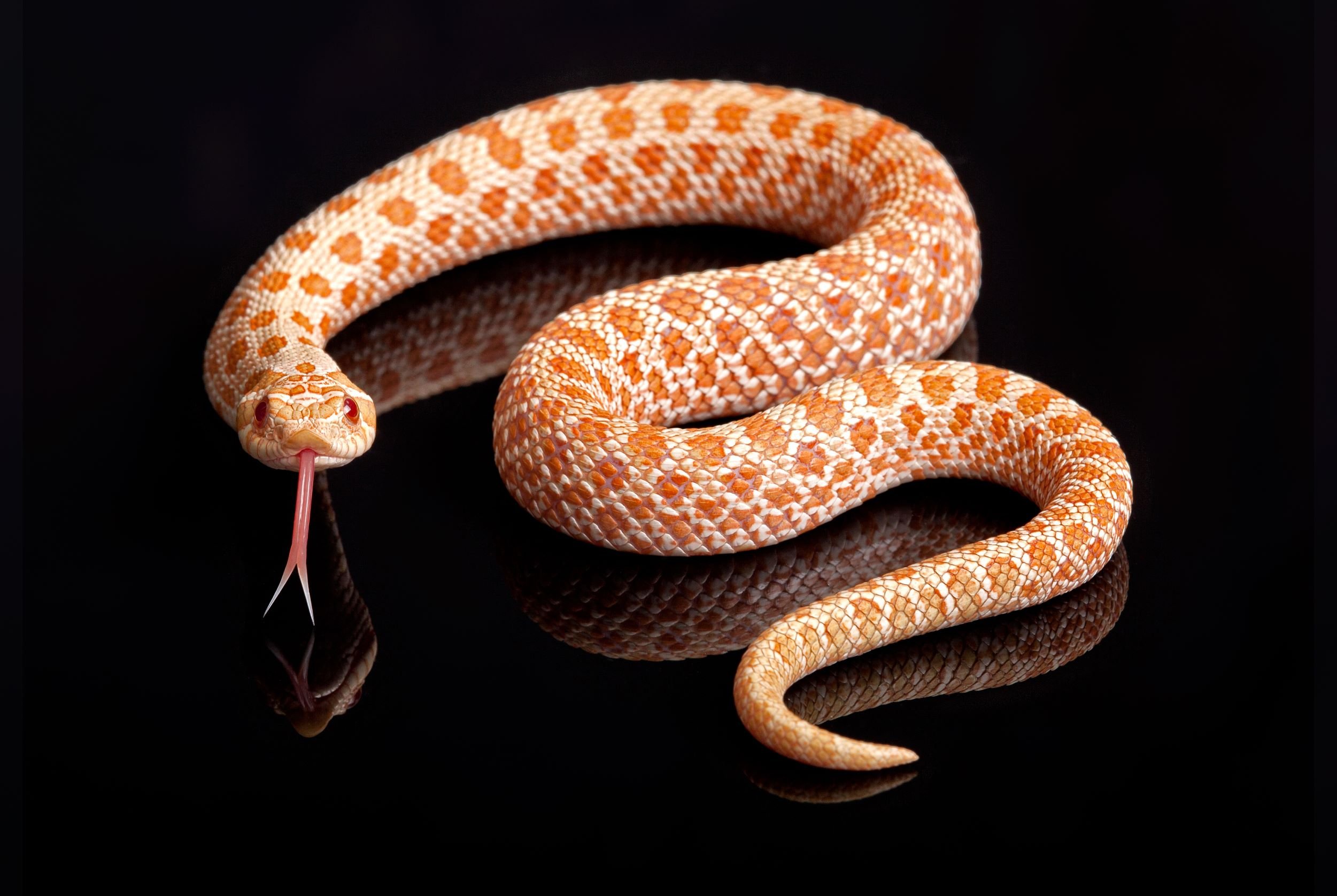
The Western Hognose, also commonly referred to as the Plains Hognose Snake, is a small, stout-bodied snake that can found in dry plains and semi-arid habitats throughout central North America.
As a species, they are so tough that they can withstand the brutal winters of southern Canada and the blistering summers of Texas. Needless to say, they are hardy and long-lived captives, even when kept in very simple enclosures.
For food, captive-bred Hoggies do fine on a diet of frozen-thawed mice, but make sure any baby you buy is already feeding consistently before you bring it home.
| Adult size: | 22 – 24 inches (55 – 60cm) |
| Enclosure size: | 2 to 3ft (60 – 90cm) |
| Lighting needs: | UV lighting not needed |
| Temperament: | Docile |
| Diet: | Frozen-thawed mice |
3. Rosy Boas (Lichanura orcutti and Lichanura trivirgata)
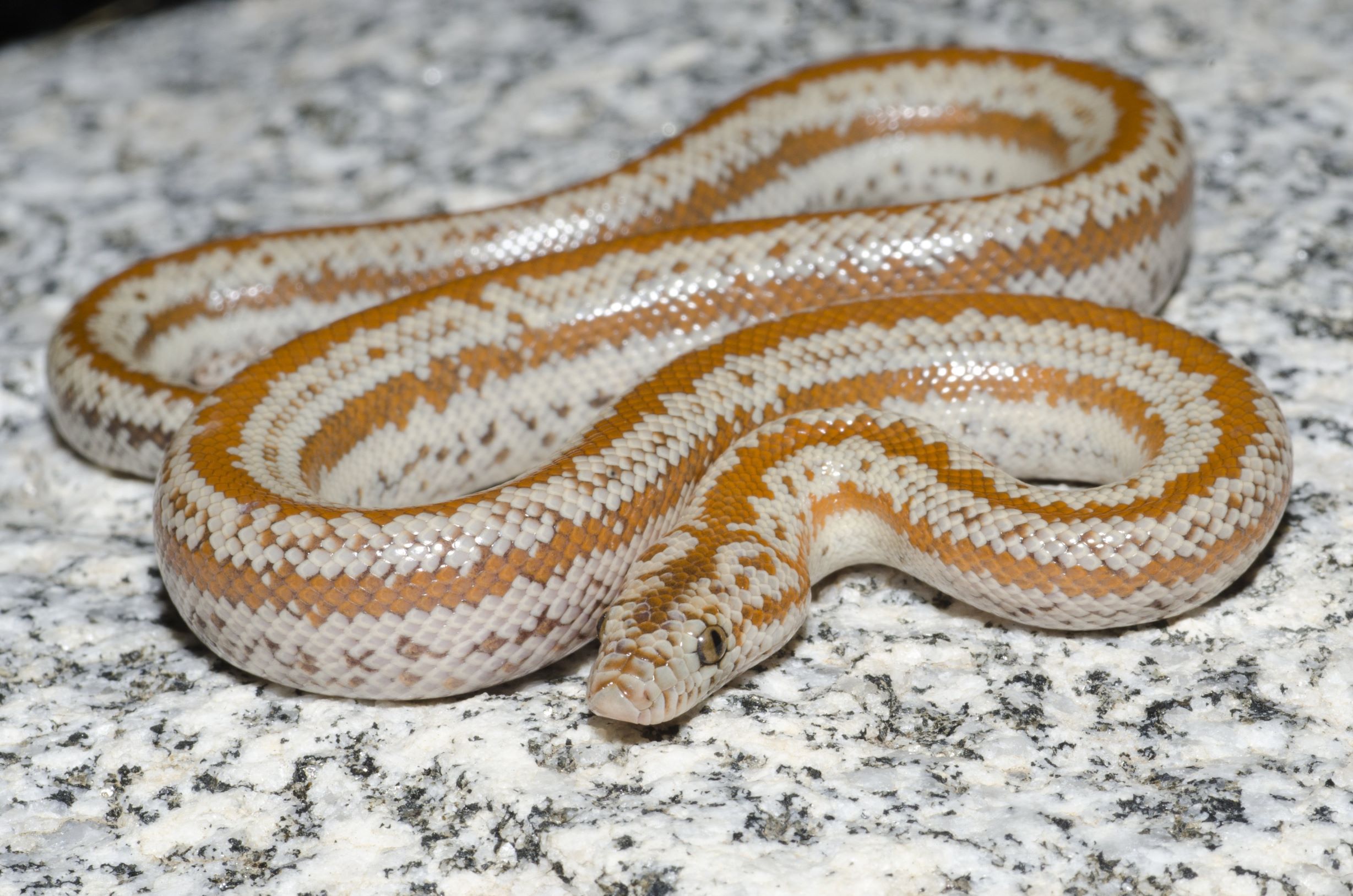
Rosy Boas are one of the most well-behaved, gentle and beautiful pet snakes you could find. Hailing from the American southwest and northern Mexico, these snakes had a boom in popularity in the 90s but were quickly eclipsed by Ball Pythons and Hognoses.
Nonetheless, they are two of my favourite species because they have so much going for them. First, they only ever get to around 3ft (1m) in total length, which is about as small as boas get (asides from the Sand Boas and Rubber Boas, of course).
Second, they eat like pigs – to the point where you must be careful not to give in and overfeed them. No fussing and worrying about whether they’re going to eat or not (Ball Python keepers not what that’s like!).
Finally, they become very tame, calm captives that are also beautiful to look at. Really, their only drawback is that they are still a little expensive, often over $200.
| Adult size: | 18 – 30 inches (45 – 76cm) |
| Enclosure size: | 2 to 3ft (60-90cm) |
| Lighting needs: | UV lighting not needed |
| Temperament: | Docile, very calm as adults |
| Diet: | Frozen-thawed mice |
4. Kenyan Sand Boa (Gongylophis colubrinus)
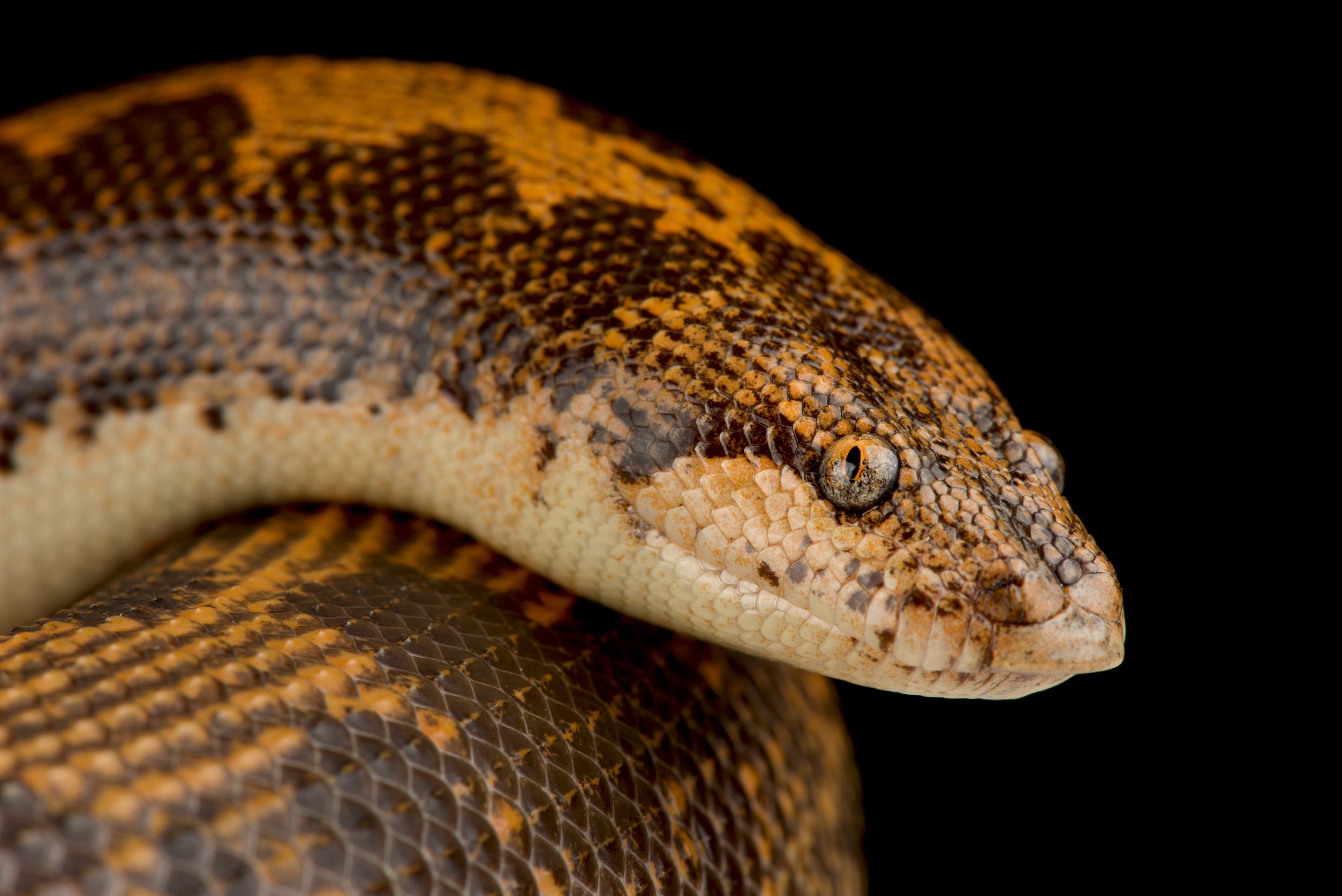
Like the Rosy Boa, Sand Boas are small, chunky and great feeders. They come with the added bonus, however, of displaying some very cool ambush behaviour.
Being from desert habitats, Sand Boas like to shimmy down into their substrate until only their eyes are visible. Then, when a prey item strolls by – or you dangle one with some feeding tongs – they burst out and grab it.
This behaviour would be terrifying from a huge reptile, but from a two foot long, goggle-eyed noodle, it’s actually quite comical. Sand Boas also come in a variety of morphs, which make them a great breeding project down the line.
| Adult size: | 2ft (60cm) |
| Enclosure size: | 2ft (60cm) |
| Lighting needs: | UV lighting not needed |
| Temperament: | Docile but likes to hide |
| Diet | Frozen-thawed mice |
5. Pueblan Milk Snake (Lampropeltis t. campbelli)
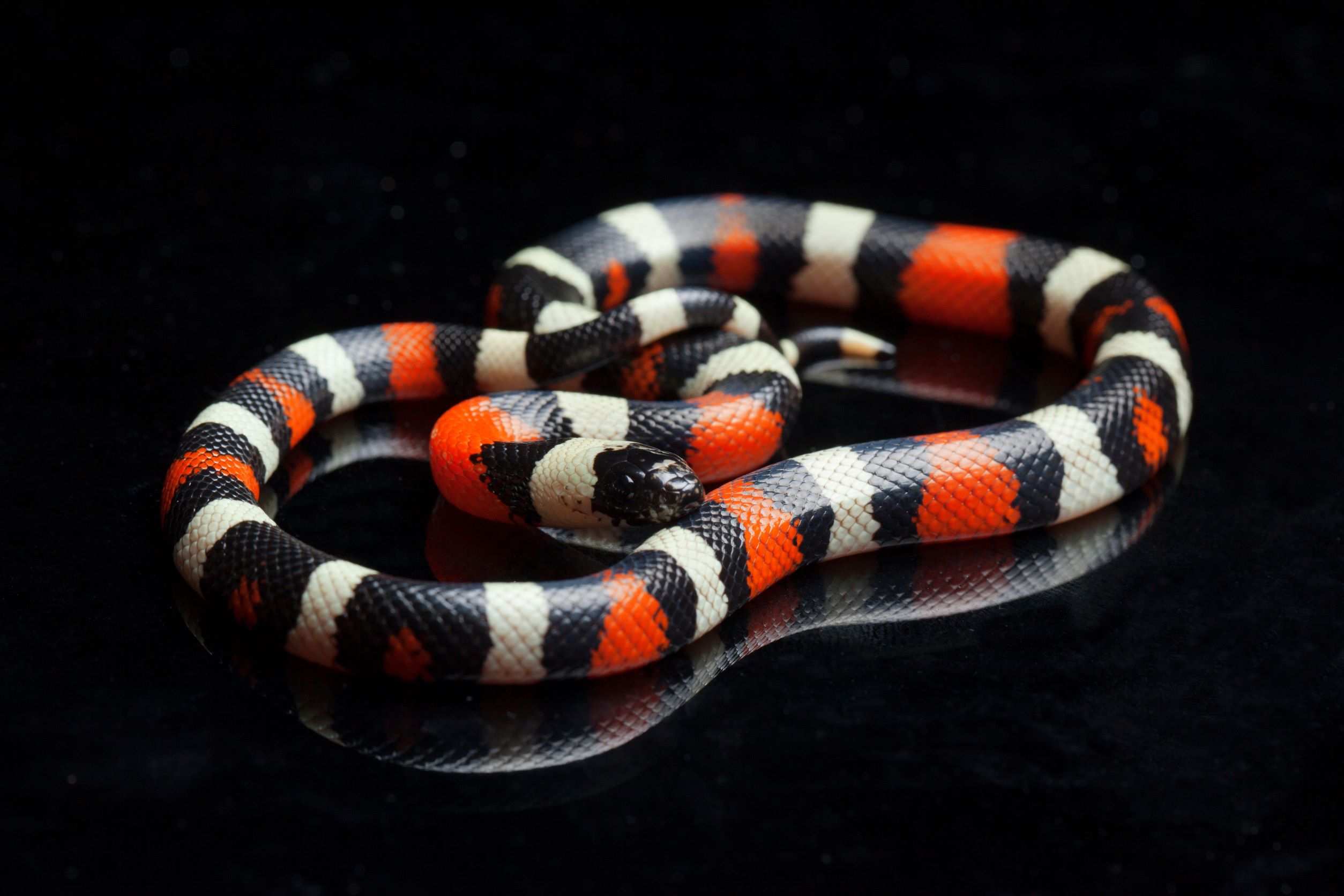
Milk Snakes of all kinds make great pets; they are hardy and extremely vibrantly patterned due to their mimicry of Coral Snakes.
Though almost all of them have these same incredible patterns and colours, they do in fact vary greatly in size. The beautiful Honduran Milk Snake, for example, can reach lengths of over 4 feet (1.2m), making them slightly more daunting for beginners.
Pueblan Milk Snakes, on the other hand, tend to stay at 2 to 3 feet (60-90cm) in length. This is what I would consider an ideal size for a pet snake. It means they get big enough to handle and observe easily, but will only ever need a 3ft long enclosure at the most.
| Adult size: | 2 to 3ft (60- 90cm) |
| Enclosure size: | 2 to 3ft (60-90cm) |
| Lighting needs: | UV lighting not needed |
| Temperament: | Babies squirmy, adults docile |
| Diet: | Frozen-thawed mice |
6. Brown House Snake (Boaedon capensis)
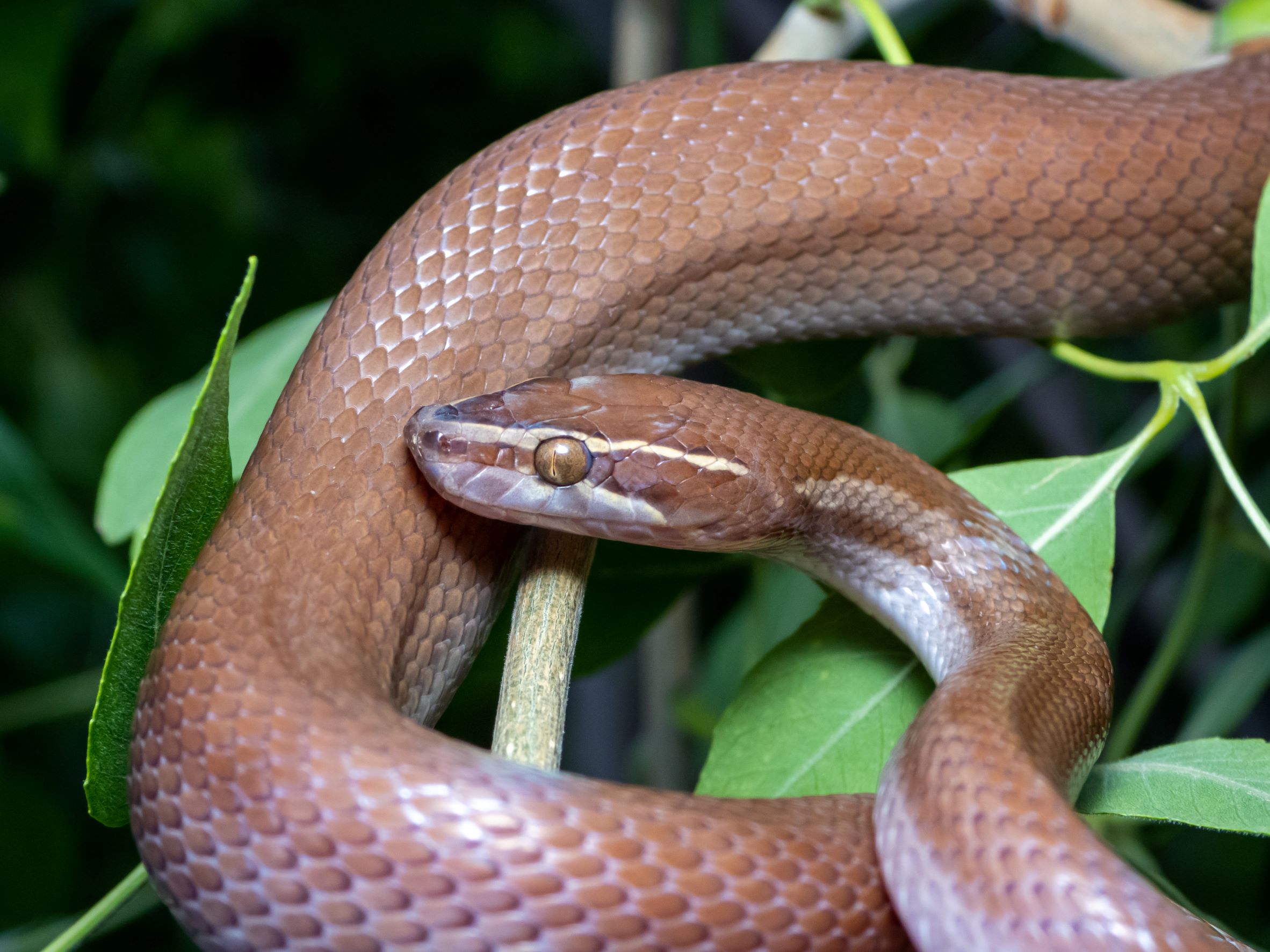
The Brown House Snake is a small species that breeds well in captivity and has very simple care requirements. It also has a laid-back temperament that makes it ideal for first-time keepers.
House Snakes have had a following in the reptile hobby for a long time now, but like Rosy Boas, they have never quite achieved the same popularity as the omnipresent Ball Python or Corn Snake.
What makes this particularly surprising is that House Snakes come in a variety of morphs which will only increase in number over time.
House Snake morphs include:
- Hypomelanistic
- T+ Albino
- T- Albino
- Green
- Ilumo (Green het. Albino)
- Butter (Albino and Green)
| Adult size: | 2 to 4ft (60- 120cm) |
| Enclosure size: | 2 to 3ft (60-90cm) |
| Lighting needs: | UV lighting not needed |
| Temperament: | Docile but head shy |
| Diet: | Frozen-thawed mice |
7. Tricolor Hognose Snake (Xenodon pulcher)
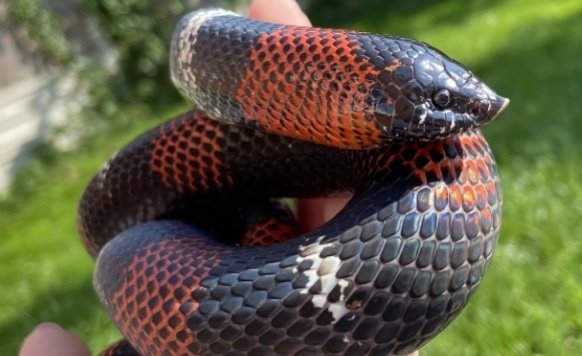
Tricolor Hoggies are every bit as charming as other Hognoses Snakes but have some key differences. First, and most important, is that they require higher humidity, both in the air and their substrate. In fact, this is the only thing they’re really picky about.
Asides from this point, they are easy to care for and very laid back as captives. Their only drawback is that they are less long-lived than most other snakes on this list, often only making it to 7 years of age.
What any keeper would tell you, however, is that their striking colouration more than makes up for this.
| Adult size: | 2ft (60cm) |
| Enclosure size: | 2 to 3ft (60-90cm) |
| Lighting needs: | UV lighting not needed |
| Temperament: | Docile |
| Diet: | Frozen-thawed mice |
8. Rough Green Snake
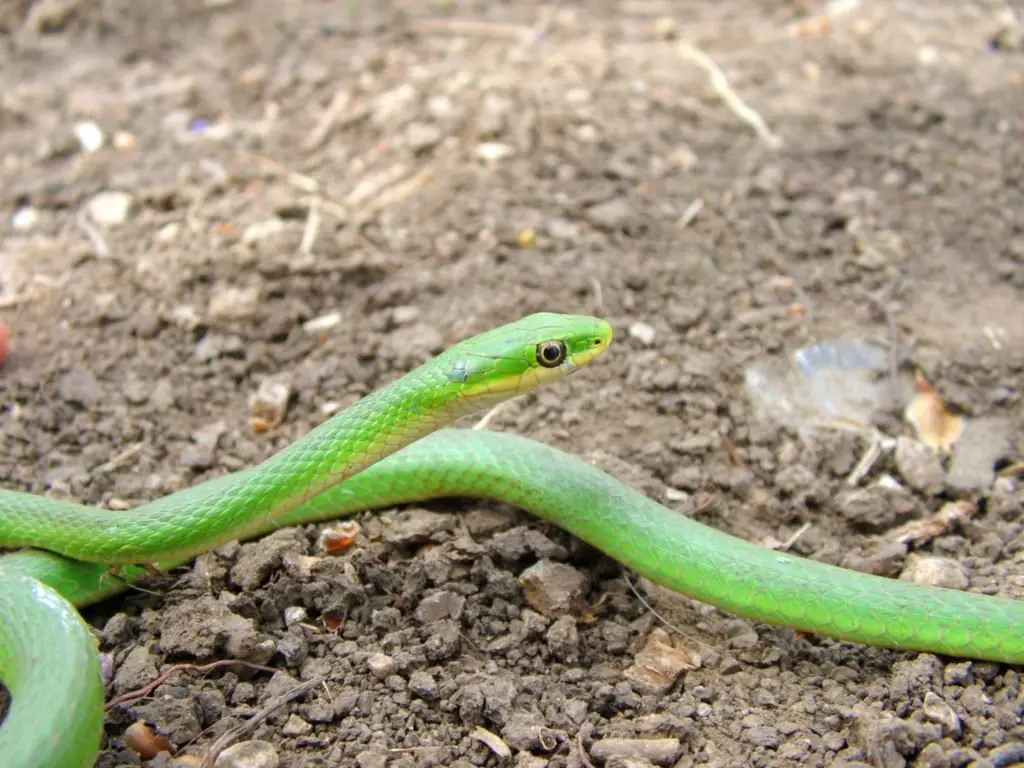
These beautiful, slender snakes come from humid areas of the south-eastern US and extreme north-eastern Mexico where they spend their days in branches near water.
If you have one as a captive, you can get hours of enjoying from watching them slowly stalk crickets and other insects through their enclosures. They also have the uncommon quality amongst snakes of tolerating other Green Snakes in their enclosure.
It’s important to remember, however, that Rough Green Snakes are arboreal and will need at least a 2ft (60cm) tall enclosure, with a UV light and heat source above it.
| Adult size: | 2 to 4ft (60- 120cm) |
| Enclosure size: | – 2 to 3ft (60-90cm) tall – 18 to 24 inches (45 – 60cm) wide |
| Lighting needs: | UV lighting essential |
| Temperament: | Shy, does not enjoy handling |
| Diet: | Invertebrates |
What is the best small snake for a pet?
I could tell you what my favourite small snake is, but let’s not forget that I am biased. I’ve been keeping them for over twenty years and I’ve developed favourites that are partly based on childhood nostalgia.
The best small snake for a pet will be different for you, and it’s important to evaluate what level of daily care you are comfortable with. Would you rather defrost a frozen-thawed mouse for a Sand Boa once a week, or would you rather buy live invertebrates for a Garter Snake a couple of times?
Do you want a snake that you can observe – but also needs an arboreal setup – like the Rough Green Snake, or would you rather a nocturnal snake that hides but is great to handle, like the Rosy Boa?
By reflecting on these questions, and reading through our list, you can decide for yourself which small snake really suits your needs.
Small snakes for sale
If you have decided that you would like to buy one of these small snakes, you should first start by finding breeders online. Look for websites where dealers are subject to reviews and ratings. This helps you be certain that they care about their reputation and will be selling quality captives.
At the same, it’s always a good idea to reach out through social media platforms to find groups of enthusiasts of the species in question. By doing this, you can make friends with people who will be happy to help you with advice and information down the road.

